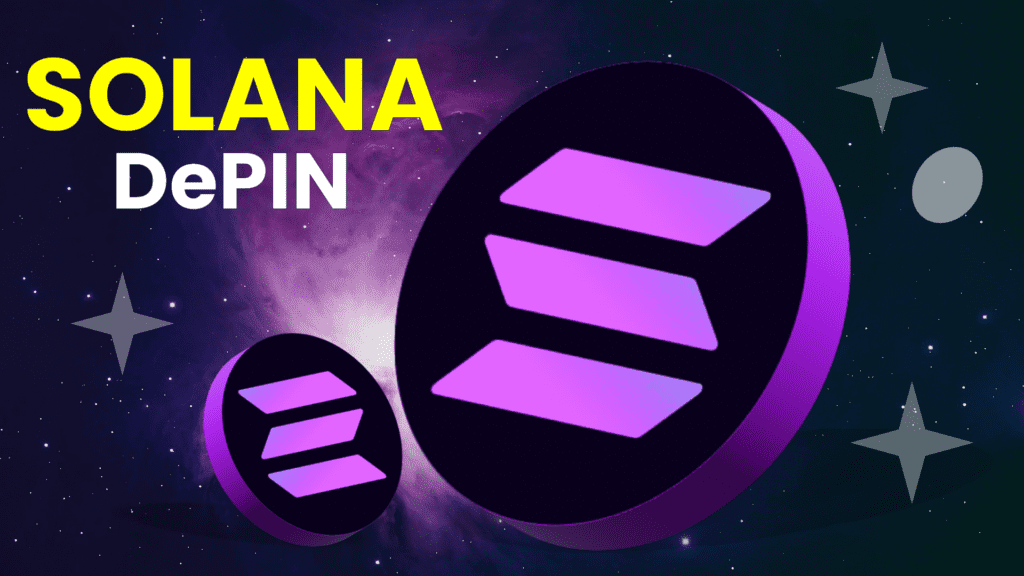Decentralized Physical Infrastructure Networks (DePINs) on Solana
Decentralized Physical Infrastructure Networks (DePINs) on Solana present an innovative alternative to conventional gig economy models.
Leading Initiatives in the DePIN Movement
Initiatives such as Hivemapper, Render, and Helium lead the DePIN movement on Solana.
Kuleen Nimkar and the Potential for Earners
Kuleen Nimkar, Solana Foundation DePIN lead, emphasizes the potential for contributors to earn significant income by supporting these networks early.
DePINs: The Next Phase in Gig Economy
Decentralized Physical Infrastructure Networks (DePINs) are not just altering traditional infrastructure models, but they’re also setting the stage for an advanced form of the gig economy. Kuleen Nimkar, the lead for Solana Foundation DePIN, draws parallels between today’s gig activities like Uber and DoorDash and the prospective opportunities with DePINs.
According to Nimkar, in the foreseeable future, individuals can augment their income by offering hardware to DePIN protocols. More intriguingly, by backing a network in its nascent stages, participants can earn tokens that might appreciate in value as the network expands.
The Potential of Solana’s DePIN Projects
Nimkar underscores Solana DePIN initiatives like Hivemapper, Render, and Helium as role models in this space. Hivemapper incentivizes drivers with tokens to collect map data using dashcams. Render, on the other hand, lets those with surplus GPU power earn by linking their hardware and offering computational strength for tasks such as machine learning. Helium’s recent launch of a $5 monthly 5G mobile service in Miami enables node operators to generate income by facilitating mobile connectivity.
Notably, these projects’ services can currently be purchased with their respective tokens. Yet, as these platforms evolve, Nimkar believes a transition to stablecoins may occur, with the native tokens pivoting towards governance.
Solana: The Preferred Choice for DePIN
Why has Solana become the primary platform for DePIN projects? Nimkar cites reasons including Solana’s minimal transaction expenses, speedy throughput, scalability, and its burgeoning DePIN ecosystem. The migration of Helium from its blockchain to Solana serves as a testament. With established projects and a thriving ecosystem, Solana offers a plethora of tools and infrastructure, streamlining the process for emerging DePIN projects.
Addressing Solana’s Decentralization Concerns
Critics have occasionally pointed fingers at Solana for perceived centralization and intermittent downtime. However, Nimkar contends that Solana is presently one of the most decentralized blockchains. He refers to the roughly 2,000 validator nodes distributed worldwide and its impressive Nakamoto Coefficient.
The resilience of Solana was apparent when an incident with a German data center led to 1,000 validators temporarily going offline. Yet, the network functioned seamlessly, demonstrating its decentralized nature. Moreover, the upcoming Firedancer validator client by Jump Crypto is set to bolster Solana’s decentralization further, placing it alongside giants like Bitcoin and Ethereum.
Conclusion
The inception and growth of DePIN projects on Solana signify a paradigm shift in how we perceive the gig economy. With projects like Hivemapper, Render, and Helium leading the charge, the future promises not only enhanced opportunities for individual contributors but also robust, decentralized networks powered by blockchain.
As Solana continues to foster these initiatives and address its challenges head-on, it stands as a beacon for innovation and the potential of decentralized systems.


